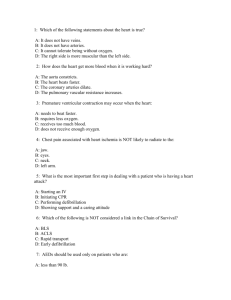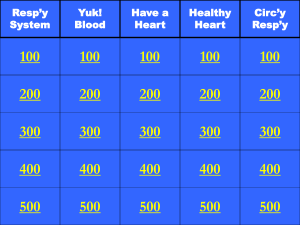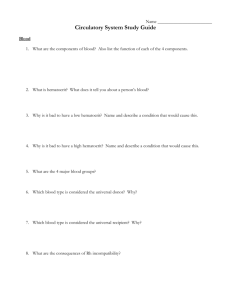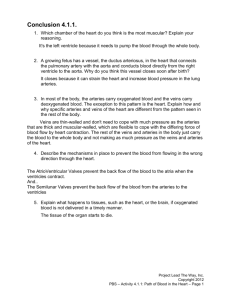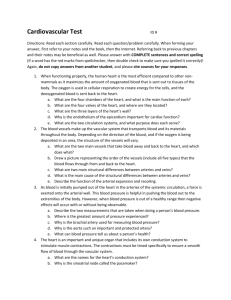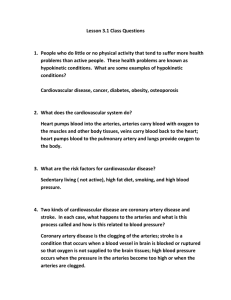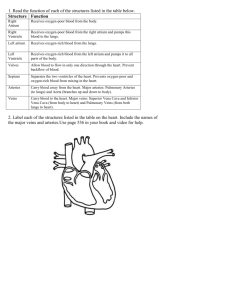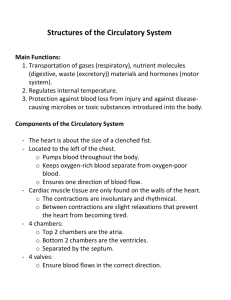nsci_281_wk_2_answers
advertisement
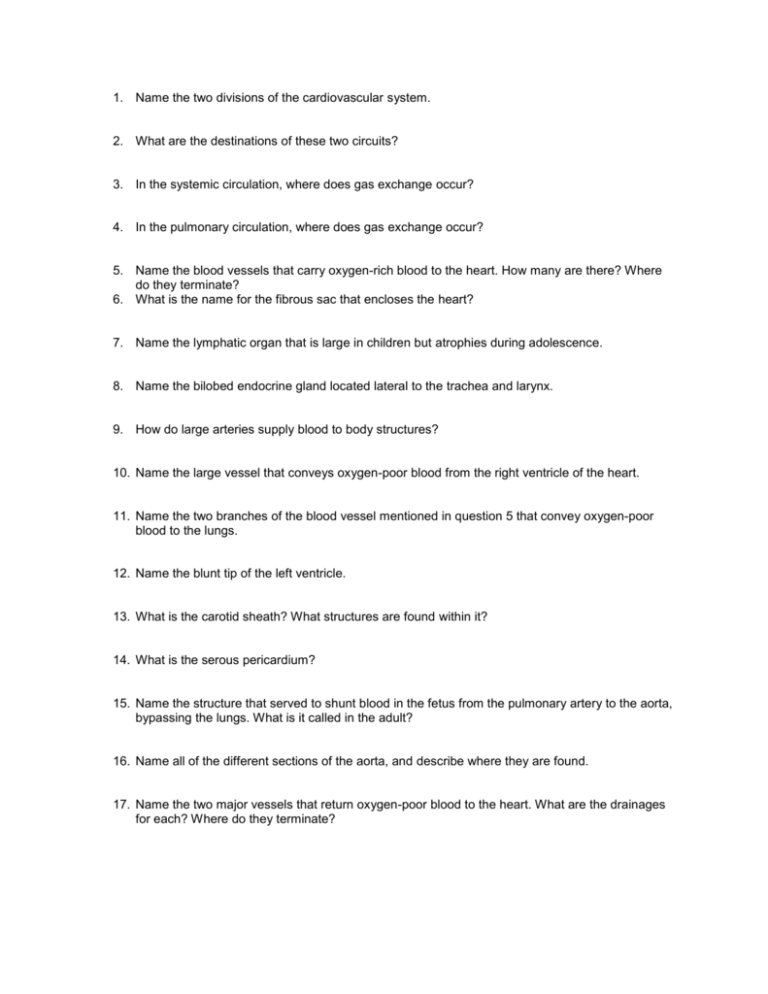
1. Name the two divisions of the cardiovascular system. 2. What are the destinations of these two circuits? 3. In the systemic circulation, where does gas exchange occur? 4. In the pulmonary circulation, where does gas exchange occur? 5. Name the blood vessels that carry oxygen-rich blood to the heart. How many are there? Where do they terminate? 6. What is the name for the fibrous sac that encloses the heart? 7. Name the lymphatic organ that is large in children but atrophies during adolescence. 8. Name the bilobed endocrine gland located lateral to the trachea and larynx. 9. How do large arteries supply blood to body structures? 10. Name the large vessel that conveys oxygen-poor blood from the right ventricle of the heart. 11. Name the two branches of the blood vessel mentioned in question 5 that convey oxygen-poor blood to the lungs. 12. Name the blunt tip of the left ventricle. 13. What is the carotid sheath? What structures are found within it? 14. What is the serous pericardium? 15. Name the structure that served to shunt blood in the fetus from the pulmonary artery to the aorta, bypassing the lungs. What is it called in the adult? 16. Name all of the different sections of the aorta, and describe where they are found. 17. Name the two major vessels that return oxygen-poor blood to the heart. What are the drainages for each? Where do they terminate? 1. Where are baroreceptors located? 2. What is their function? 3. How do the arteries with baroreceptors, and all arteries for that matter, respond to increased blood pressure? 4. What response do the baroreceptors have to this increased blood pressure? 5. Where are these action potentials conducted? 6. What nerves conduct these impulses? 7. What is the parasympathetic response to and result of this stimulation? 8. What is the sympathetic response and result? 9. What about sympathetic stimulation of the blood vessels? 10. What physical events combine to bring elevated blood pressure back toward normal? Animation: Chemoreceptor Reflex After viewing the animation, answer these questions: 1. Where are chemoreceptors located? 2. What is their function? 3. Where are the impulses from the chemoreceptors conducted? 4. What nerves conduct these impulses? 5. What three events decrease parasympathetic stimulation of the heart? 6. What effect does this decreased stimulation have on the physiology of the heart? 7. What sympathetic response occurs during the three events listed in question 5? 8. What sympathetic response occurs in the blood vessels? 9. If the chemoreceptors are stimulated by decreased blood oxygen, what physical changes occur as a result of the changes in autonomic stimulation? 10. What would you deduce is the effect on blood pressure as a result of the answer to question 9? 11. Name the gland that produces 25 percent of your saliva. 12. List three structures that pass through this gland. 13. Where does the duct from this gland empty? 14. Name two veins of the head and neck that lack valves. 15. Name a superficial vein that drains the temporal region. 16. List the areas drained by the maxillary veins. 17. What is an anastomosis? Give an example of one in the head and neck region. 1. Name the three arteries through which blood flows to the brain. 2. Which two arteries supply blood to 80 percent of the cerebrum? These are the terminal branches of which arteries? 3. Which arteries enter the cranial cavity through the foramen magnum? They unite to form which artery? 4. Which arteries supply the occipital and temporal lobes of the cerebrum? 5. Which arteries form an anastomosis at the base of the brain? What is the name of this anastomosis? 6. What is the function of the anastomosis? 7. Blood is drained from the brain through small veins that empty into vessel channels called . 8. From where does blood flow to enter the confluence of sinuses? 9. From the confluence of sinuses, where does blood flow before leaving the skull? 10. The blood leaves the skull via the . In Review 1. Name the large crescent-shaped fold of dura mater that separates the right and left cerebral hemispheres. 2. Name the small crescent-shaped fold of dura mater that separates the right and left cerebellar hemispheres. 3. Name the dural venous sinus that contains arachnoid granulations. What is the function of these granulations? 4. Name the dural venous sinus that drains the medial cerebral hemispheres. 5. Name the horizontal crescent-shaped fold of the dura mater that separates the cerebral hemispheres and the cerebellum.

